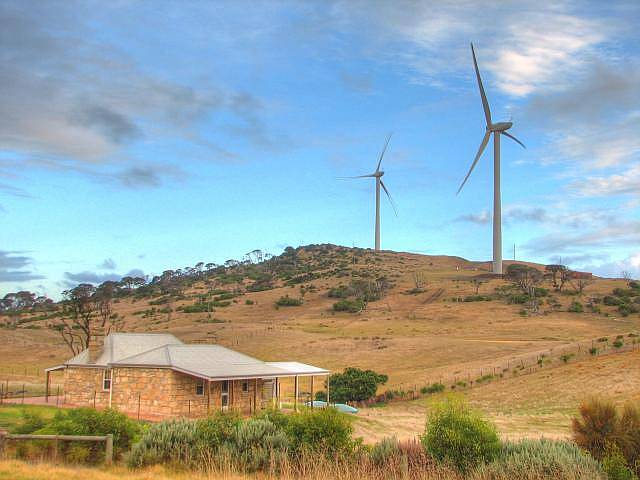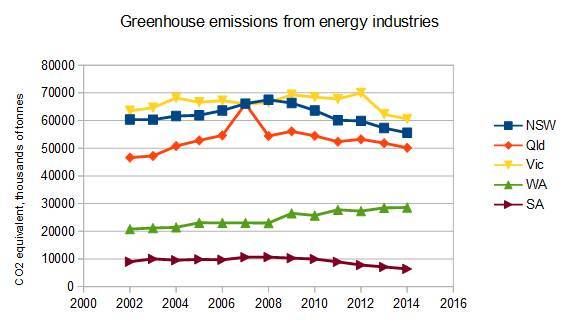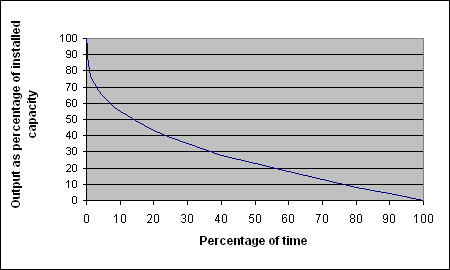|
- It may not address the point in question;
- It may contain a false premise;
- It can be misleading;
- It can be so vague and unclear as to be meaningless;
- It can simply be wrong.
A good argument will be backed-up with evidence and anyone who uses any
argument should be able to provide sound evidence in support of their stance.
Many, probably most, wind power opponents make claims for which they can
provide no supporting evidence.
Types of invalid arguments
The explanations in this section are about arguments in general, not about arguments specific to wind power.Ad hominem
From The Skeptic's Guide: "An ad hominem argument is any that attempts to counter another's claims or conclusions by attacking the person, rather than addressing the argument itself."
|
|
Straw man
From The Skeptic's Guide: A straw man argument attempts to counter a position by attacking a different position – usually one that is easier to counter. The arguer invents a caricature of his opponent's position – a "straw man" – that is easily refuted, but not the position that his opponent actually holds.
A typical straw man argument used against wind power is:
"No country can run on wind power because the wind doesn't blow all the time.
When the wind stops there's no electricity."
I doubt that anyone has ever advocated running a country on wind power alone;
that would be the only case in which this argument would be valid.
Non-sequitur
From the Skeptic's Guide: In Latin this term translates to "doesn't follow". This refers to an argument in which the conclusion does not necessarily follow from the premises. In other words, a logical connection is implied where none exists.
An example: a wind power opponent states that fossil fuels are needed
to build a wind farm, therefore his case that wind power does not replace
fossil fuels is proven.
A deductive argument based on at least one wrong premise
A deductive argument can consist of several premises from which a conclusion can be drawn. If the premises are correct the conclusion must follow.One wind power opponent wrote to me that wind power was unviable because wind turbines require oil. He didn't explain further, but from other similar claims it seems that the reasoning goes something like this:
- Premise 1.
- Coking coal is needed to make the steel of turbine towers, petrochemicals are needed to make wind turbine blades, lubricating oils are needed for turbines to be operated.
Nonsense
If wind turbines are no sort of answer to our energy supply because they can't be built or operated without fossil fuels would it follow that this deal to supply wind power to an oil refinery means that oil is a dud because it needs wind power to run the refinery?Mt Gellibrand wind farm to help power Geelong oil refinery
Of course both arguments are nonsensical.
- Premise 2.
- If renewable energy is to generate a large part of our energy supply no fossil fuels or mineral oils can be used.
- Conclusion
- Therefore wind power can not provide a large part of the world's energy.
I suspect that I hardly need point out to the reader that the second premise is quite false, therefore the conclusion does not follow.
A more valid conclusion is close to being the opposite of the claim
In fact since coal can be used to make the steel of turbine towers, petrochemicals are needed to make wind turbine blades and lubricating oils are needed for wind turbines to be operated we have excellent reasons to reserve the world's remaining fossil fuels for high-value uses such as these rather than burning them.|
|
Simply wrong
Perhaps most of the invalid arguments made by opponents of wind power are invalid because they are plain wrong.
|
An outstanding example of someone getting it totally wrong is the case of a prominent economist who wrote a submission to a parliamentary committee claiming that it would take more than 3000 years for a wind farm to 'pay back' the carbon dioxide emissions resulting from the manufacturing of the concrete used in the turbine's footings. This figure is too high by a factor of about 60,000.
The third example I will give is the claim, used particularly by the opponents of a wind farm on South Australia's Yorke Peninsula, that wind farms are incompatible with agriculture. One of several ways in which this can be refuted is to point out that the three US states with the greatest amount of installed wind power are also the three most agriculturally productive states in that country.
One of the most absurd arguments that wind power opponents use is the claim that wind turbines don't reduce CO2 emissions. The amount of electricity generated in a power grid must always equal the amount being consumed, so when wind turbines put power into a grid other generators, often fossil-fuelled, generate less; so less fossil fuels are burned. I've discussed this subject elsewhere in greater depth. Also, quoting from Scientific American:
"Wind Power Proves Effective CO2 SaverThe piece was written by Paul Brown and dated on October 22, 2013.
Contrary to claims by critics of wind power, Spanish researchers say, the turbines do reduce carbon dioxide emissions significantly even though the wind does not blow continuously"
Examples of a few specific invalid arguments used agains wind power
|
Wind power replaces coal power
A very few years ago it was common to hear from wind farm opponents statements like "No coal-fired power station has ever been shut down because of wind power". In fact many coal-fired power stations are shutting down because with the rise of wind and solar they are no longer needed. As one example, in my own state of South Australia there was practically no renewable energy in 2002, but in May 2016 the state's last coal-fired power station shut down and we are now getting an average of around 41% of our power from wind and solar (by 2023 the figure was 71%).Wind turbines and health
There is absolutely no sound evidence that wind farms harm anybody's health; there are more than 20 reviews of the research literature showing that. In fact wind power will improve the health of populations because it will replace coal-fired power stations, the emissions from which cause millions of deaths globally each year.One 'argument' you might come across if you point out the science about turbines and health is "So you believe that all those people who have reported to wind farm inquiries about their health problems are telling lies!". Of course this is another non-sequitur; they are drawing an unwarented conclusion. These people are more likely to be mistaken in their belief about the cause of their illnesses rather than lying; although some may well be exaggerating their symptoms.
|
|
Rare earths and environmental damage
Rare earth mining in China has caused serious environmental damage. Many modern consumer and industrial devices and machines use rare earths; wind turbines are just one of these. To blame the environmental damage on wind turbines, either principally or alone, is absurd but common among wind power opponents. More information is available on another page on this site.Backup power and emissions
Installation of wind power does not require additional backup power that then
impacts emissions reductions
|
For example, there has been no increase in backup power in South Australia following the installation of substantial wind power in the years between 2003 and 2016.
Strong evidence that wind power does reduce emissions is given by the graph on the right that shows that emissions fell in SA by 29% since 2002. There were no wind farms in SA in 2002, by 2014 South Australian wind farms were generating about 37% of the state's power. The best emissions reduction performance from any other state was a decline of 8% from NSW.
The graph also shows a significant decline in Victorian emissions starting in 2012. This coincides with a doubling (from 514 to 1066 MW installed) of wind power in that state. The percentage of wind power in Victoria is much smaller than that in SA.
550 MW of installed wind power in Australia can be expected to reduce emissions by around 1.5 million tonnes per annum so it is not enough to explain the full drop in Victoria's emissions, but it would have been a contributing factor.
Social disruption
When a proposed wind farm is opposed by a group of vocal and dishonest people social conflict can result. Where there is no dishonest opposition, there is no social disruption.For example, in my region of South Australia, there was neither social disruption nor dishonest opposition before the building of Clements Gap, Brown Hill Range, Snowtown or Wattle Point wind farms, but there was on Yorke Peninsula when the Ceres Project, which included a big wind farm, was proposed. It was opposed by a very dishonest group calling itself the Heartland Farmers.
Arguments that are irrational or contradict ethical principles
An argument may be functionally valid and yet contradict ethical principles. For example, the argument that a wind farm should not be built because a few of the people who live in the vicinity don't want it, when it will be good for the region, the state, the country and the planet, is not an argument that can be ethically or rationally upheld.Climate change, associated problems, and air pollution from the burning of fossil fuels
|
In my experience vocal opposition to wind power almost always is accompanied by denial of climate change and associated problems.
It would be interesting to know whether the climate science denial follows the opposition to wind power, or the opposition to wind power is at least partly because the disbelief in ACC causes the person to not see so much need for renewable energy.
Perhaps one in some cases, the other in other cases?
An often used invalid argument about climate change action
Would it be justifiable for me to say "No, I will not stop throwing rubbish out of my car windows. If I did I'd be putting myself to some trouble and it would make a negligible difference to the amount of rubbish on the roadsides"?No?
Then neither is it justifiable to say, as has been said many times, "If Australia was to reduced its emissions it would impact our economy but would not solve the climate change problem".
|
|
Some absurd, ignorant or stupid arguments
Below I intend to list a few of the more ridiculous arguments against wind power that I have had thrown at me (in addition to the examples listed above, which were all based on arguments that I've heard used).Ridiculous expectation
On discussing wind farms and health I mentioned that I lived within 15km of a wind farm and that I have slept under turbines many times and have had a good night's sleep every time. The respons was "So what? You should live in a wind farm house for six months."Wind turbines generate power most of the time
|
This argument probably comes from someone hearing that the capacity factor of a wind farm is 30%. What a capacity factor of 30% means is that a wind farm that can generate a maximum of, say, 100 MW will, on average, generate 30 MW. A little thought will then tell us that if it generated power only 30% of the time it would have to be either generating at 100% power or not generating at all; never generating at half power, two-thirds power, a quarter power. This is plainly absurd.
The graph on the right shows the percentage of the time when total wind farm output in SA exceeds a given percentage of installed capacity. For example, it shows that 10% of the time South Australian wind farms are producing about 55% of installed capacity and 60% of the time they are producing about 18% of installed capacity.
South Australian wind farms are generating power far more often than they are not generating power.
Finally, I should say that the average capacity factor of Australian wind farms is closer to 35% than 30%; excellent by world standards.
Wind power alone; energy storage
A wind turbine opponent, Lyndsey Ward, said on Facebook, May 2016: "Ask yourself this. If you were on a life support machine how would you like it to be powered?"Implying, on no basis whatsoever, that if there is wind power there cannot be any other sort of power. I pointed out that in the real world wind could be combined with solar PV, solar thermal, biofuels, hydro and there could be energy storage. The opponent went on to say: "There is no viable storage and probably never will be. All research so far shows it would be massively expensive and would need fossil fuels to be built."
The probability that it would require fossil fuels to be built is, of course, quite irrelevant. I remarked that Wikipedia says that worldwide in pumped hydro alone there is capacity for 127GW (that is 127,000,000,000 Watts) of power and 740TWh (that is 740,000,000,000,000Wh) of energy in storage.
Not to be put off, the opponent went on to say: "There is no viable storage for industrial wind energy."




